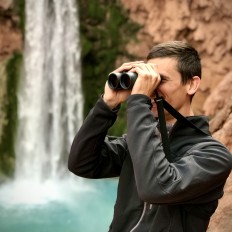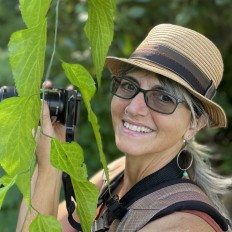Top species
- Band-tailed Pigeon (Patagioenas fasciata)
- Anna's Hummingbird (Calypte anna)
- Rhinoceros Auklet (Cerorhinca monocerata)
- Marbled Murrelet (Brachyramphus marmoratus)
- Pigeon Guillemot (Cepphus columba)
- Ancient Murrelet (Synthliboramphus antiquus)
- Short-billed Gull (Larus brachyrhynchus)
- Glaucous-winged Gull (Larus glaucescens)
- Brandt's Cormorant (Urile penicillatus)
- Pelagic Cormorant (Urile pelagicus)
- Western Flycatcher (Empidonax difficilis)
- Hutton's Vireo (Vireo huttoni)
- Steller's Jay (Cyanocitta stelleri)
- Chestnut-backed Chickadee (Poecile rufescens)
- Pacific Wren (Troglodytes pacificus)
- Purple Finch (Haemorhous purpureus)
- Black-throated Gray Warbler (Setophaga nigrescens)
List up to ca. 25 species that:
• have a limited distribution range and/or are rare on a global level
• are most sought-after by birdwatchers at this site
• and are relatively easy to see at this site (year-round or seasonally)
| Band-tailed Pigeon (Patagioenas fasciata) | |
| Anna's Hummingbird (Calypte anna) | |
| Rhinoceros Auklet (Cerorhinca monocerata) | |
| Marbled Murrelet (Brachyramphus marmoratus) | |
| Pigeon Guillemot (Cepphus columba) | |
| Ancient Murrelet (Synthliboramphus antiquus) | |
| Short-billed Gull (Larus brachyrhynchus) | |
| Glaucous-winged Gull (Larus glaucescens) | |
| Brandt's Cormorant (Urile penicillatus) | |
| Pelagic Cormorant (Urile pelagicus) | |
| Western Flycatcher (Empidonax difficilis) | |
| Hutton's Vireo (Vireo huttoni) | |
| Steller's Jay (Cyanocitta stelleri) | |
| Chestnut-backed Chickadee (Poecile rufescens) | |
| Pacific Wren (Troglodytes pacificus) | |
| Purple Finch (Haemorhous purpureus) | |
| Black-throated Gray Warbler (Setophaga nigrescens) |
Short-billed Gull (Larus brachyrhynchus) was added by Eric Hope (2023-01-24 23:59:14)
Black-throated Gray Warbler (Setophaga nigrescens) was added by Eric Hope (2021-08-22 23:08:00)
Purple Finch (Haemorhous purpureus) was added by Eric Hope (2021-08-22 23:07:19)
Pacific Wren (Troglodytes pacificus) was added by Eric Hope (2021-08-22 23:07:01)
Steller's Jay (Cyanocitta stelleri) was added by Eric Hope (2021-08-22 23:06:30)
Chestnut-backed Chickadee (Poecile rufescens) was added by Eric Hope (2021-08-22 23:06:18)
Western Flycatcher (Empidonax difficilis) was added by Eric Hope (2021-08-22 23:05:47)
Pelagic Cormorant (Urile pelagicus) was added by Eric Hope (2021-08-22 23:04:49)
Brandt's Cormorant (Urile penicillatus) was added by Eric Hope (2021-08-22 23:04:40)
Glaucous-winged Gull (Larus glaucescens) was added by Eric Hope (2021-08-22 23:04:12)
Parasitic Jaeger (Stercorarius parasiticus) was deleted by Eric Hope (2021-08-22 23:03:42)
Parasitic Jaeger (Stercorarius parasiticus) was added by Eric Hope (2021-08-22 23:03:21)
Ancient Murrelet (Synthliboramphus antiquus) was added by Eric Hope (2021-08-22 23:01:21)
Band-tailed Pigeon (Patagioenas fasciata) was added by Eric Hope (2021-08-22 23:00:58)
Rhinoceros Auklet (Cerorhinca monocerata) was added by Eric Hope (2021-08-22 23:00:38)
Pigeon Guillemot (Cepphus columba) was added by Eric Hope (2021-08-22 23:00:29)
Anna's Hummingbird (Calypte anna) was added by Eric Hope (2021-08-22 22:59:51)
Hutton's Vireo (Vireo huttoni) was added by Eric Hope (2021-08-22 22:59:39)
Marbled Murrelet (Brachyramphus marmoratus) was added by Eric Hope (2021-08-22 22:59:20)



